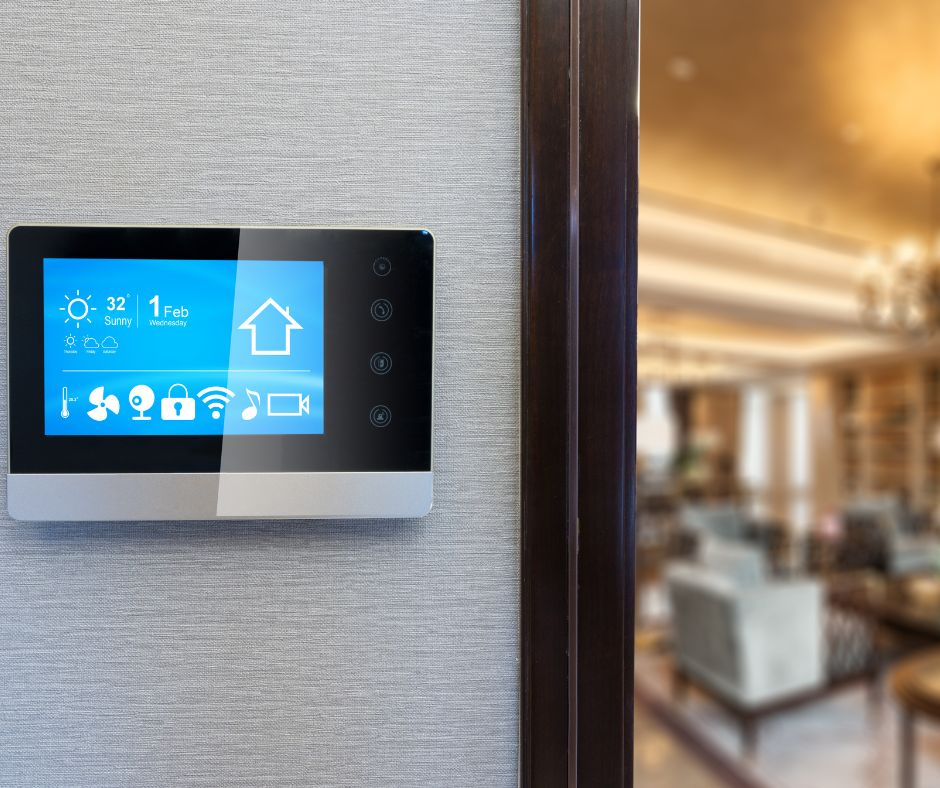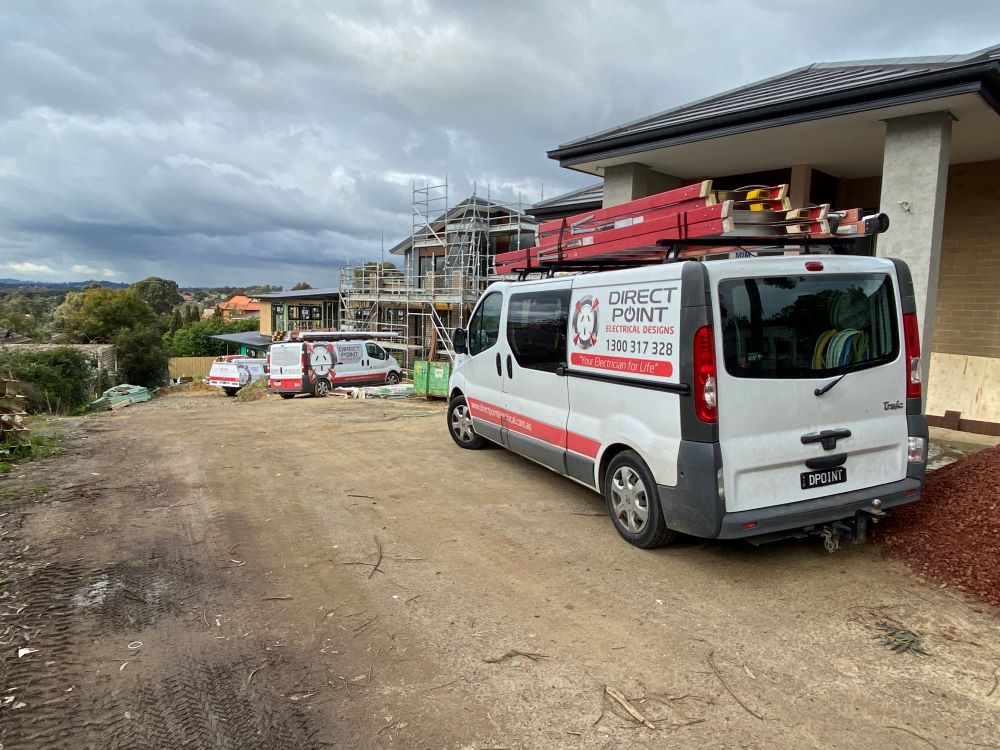Essential Components of a Comprehensive Smart Home Electrical Setup
An effective smart home electrical setup harmoniously integrates various systems, including lighting, climate control, security, and automation technologies, into a unified network. This integration necessitates the use of safe, standards-compliant wiring, advanced smart switches or relays, and compatible hubs such as Google Home or Amazon Alexa. It may also incorporate sensors, voice control features, and app-based scheduling functionalities. Engaging a licensed electrician is paramount to ensure that all devices are installed correctly, and circuits are designed to be future-proofed for upcoming technologies.

Understanding the Benefits and Features of a Smart Home
Smart homes extend beyond mere gadgets—they represent a significant evolution in control, safety, and lifestyle enhancement. Homeowners increasingly embrace smart lighting, advanced climate control systems, and integrated security solutions. However, many individuals are unaware that without a robust electrical infrastructure, no smart system can function reliably or safely. This is where Direct Point Electrical excels; we specialise not just in wiring homes but in future-proofing them for advancements in technology.
Defining a Smart Home Electrical Setup
A smart home electrical setup connects a variety of appliances, lighting, heating, and security systems through a central control interface, which may be an app, voice assistant, or touch panel. The primary objective is to achieve seamless automation: for instance, lights that respond dynamically to motion, air conditioning that adjusts based on occupancy, and doors that can be unlocked remotely through a smartphone. However, achieving this level of integration requires:
- Thoughtfully designed circuits and load separation for efficiency
- Approved smart-compatible devices and controllers for functionality
- Safe wiring that meets AS/NZS 3000:2018 standards
- Reliable internet connectivity and backup power planning for uninterrupted service
Core Systems Essential for a Smart Home
1. Revolutionising Home Lighting with Smart Technology
Smart lighting serves as the gateway to comprehensive home automation. Homeowners can establish scheduled routines (for example, a “Goodnight” routine that turns off all lights) and control brightness by specific zones, while also automating pathways with motion sensors. The available options include:
- Wi-Fi or Zigbee-enabled downlights for connectivity
- Smart switches or in-wall dimmers for precise control
- Outdoor lights equipped with daylight sensors for efficiency
- Room presets activated by voice commands for convenience
We adhere to industry best practices by ensuring that all circuits are protected by RCDs and utilise only fire-rated fittings where necessary, such as in ceiling voids. Consider exploring our Energy-Efficient Installations for compatible lighting upgrades that enhance your home’s energy profile.
2. Optimising Temperature Control with Smart Climate Solutions
Experience the convenience of controlling your home’s temperature directly from your smartphone—or have it automatically adjust based on your presence. Our smart climate control solutions include:
- Smart thermostats for precise temperature management
- Split system AC automation modules for enhanced efficiency
- Heated towel rail timers to optimise energy use
- Exhaust fan timers for bathrooms and laundries to improve air quality
We ensure that all high-load devices are isolated on dedicated circuits and equipped with appropriate amperage and overcurrent protection to ensure safe and efficient operation.
3. Enhancing Home Security with Smart Systems
Smart security systems play a crucial role in safeguarding your home while keeping you connected. These systems may include:
- Doorbell cameras featuring two-way audio for communication
- Motion-triggered lighting that activates when movement is detected
- Integration with garage roller doors for added convenience
- Electric door strikes that allow for keypad or smartphone entry
- CCTV systems with remote access for peace of mind
It’s essential to note that outdoor and wet-zone installations must comply with the IP rating requirements outlined in AS/NZS 60529, and we strictly adhere to these regulations during installation. Explore our Security Wiring Services for more information.
4. Smart Switchboards: The Heart of Home Automation
Modern smart switchboards offer app-level control over individual circuits, making them ideal for:
- Monitoring power usage for efficiency
- Balancing loads across circuits
- Providing surge protection for safety
- Enabling remote shutdown capabilities, such as when away on holiday
If you are considering constructing a new building or upgrading your existing switchboard, be sure to check our Switchboard Upgrade Services for comprehensive assistance.
Choosing Between Wireless and Wired Systems: Which Is Best for Your Home?
Wireless Options (Wi-Fi/Zigbee/Bluetooth):
Pros: Wireless systems are easy to retrofit into existing homes and offer a fast installation process.
Cons: They require a stable network connection and can fail if the router experiences any issues.
Wired Options (KNX, Cat6, DALI):
Pros: Wired systems provide ultra-reliable performance, enhanced security, and scalability for future upgrades.
Cons: They tend to be more expensive and are typically best suited for new builds.
In residences throughout Melbourne’s eastern suburbs, we often implement a hybrid approach: using wiring where practical (for components like switches, alarms, and cameras) and wireless technology for lighting or climate control zones to create a balanced and effective system.
Key Protocols to Understand in Smart Home Technology
- Zigbee: A low-energy mesh network ideal for lighting control
- Z-Wave: A reliable option that is secure and highly scalable, though more niche
- Wi-Fi: Easy to implement but can overload home networks if not managed
- Matter (formerly known as Project CHIP): An emerging open-source standard supported by major players like Apple, Google, and Amazon, expected to set the standard
- KNX/DALI: High-end, wired commercial-grade systems typically used in large installations
We ensure that your smart system is compatible with both existing and emerging protocols to prevent device obsolescence and maximise your investment.
Our Comprehensive Approach to Smart Setup Design
Every smart home installation begins with a detailed plan. Our process includes:
- Conducting a thorough audit of your existing wiring and device layout
- Mapping out zones based on usage and electrical load
- Separating high-voltage (power) from low-voltage (data) systems
- Ensuring all safety devices, such as RCDs and RCBOs, are correctly installed
- Coordinating with builders or automation technicians as required
Our licensed electricians manage all installations to comply fully with AS/NZS 3000 standards and issue a Certificate of Electrical Safety (COES) for each smart-enabled upgrade. We frequently collaborate on new home builds, bringing the latest automation innovations to homeowners. Additionally, we can incorporate smart technology into existing homes; simply reach out to us with any questions regarding what is required for installation or upgrades.
Your Questions Answered: Smart Home FAQs
Is it necessary to hire a licensed electrician for smart system installations?
Absolutely. All wiring and new switch installations must be conducted by a licensed professional in Victoria to ensure safety and compliance.
Can I use both Alexa and Google in the same household?
Yes, you can utilise both platforms; however, they will operate independently, requiring compatible devices for each.
Do smart lights remain functional during a power outage?
No, standard smart lights will not work when the power is out, although battery-backed systems (such as those for cameras or sensors) can maintain some level of functionality.
Is it possible to begin automating just one room initially?
Definitely. Many clients start with automation in a living room or kitchen and gradually expand the system over time.
Will smart devices contribute to higher electricity consumption?
No, most smart devices consume less than 1W in standby mode. In fact, automation often leads to a reduction in overall energy usage.

Transforming Your Lifestyle with Smart Home Technology
A smart home is not merely about technology for technology's sake; it is fundamentally about creating a safer, more efficient, and personalised living environment. Whether your goal is to implement simple smart lighting solutions or establish a fully automated home, Direct Point Electrical is committed to designing a system tailored to your lifestyle. We empower homeowners to wire not only for today but also for the advancements of the next decade.



The integration of smart home technologies is more than just a trend; it represents a pivotal shift in how we engage with our living spaces and shape our daily routines. Your insights into the essential components of a comprehensive smart home electrical setup resonate deeply with the need for a well-planned approach to home automation. I often find myself reflecting on how these interconnected systems can redefine our relationship with our environment, moving us from passive inhabitants to active participants in our homes.
Your insights into the integration of smart home systems are spot on. I’ve found that one of the most compelling benefits of a comprehensive setup is the ability to create personalized experiences that cater to our daily routines. For instance, I programmed my smart lighting to gradually brighten in the morning, simulating a natural sunrise—this has truly transformed my mornings and even improved my mood.
Your exploration of the essential components in creating a comprehensive smart home electrical setup really resonates with me. It’s fascinating how technology has evolved to not only enhance our daily routines but to also redefine what we consider to be a “home.” I particularly appreciate your emphasis on the importance of safety and compliance with standards when integrating these systems, as it’s easy to overlook safety in the excitement of new gadgets.
The exploration of smart home setups definitely brings to light the intricate balance between convenience and the complexities of safe electrical integration. It’s fascinating how this journey into smart technology is transforming our day-to-day lives, but I find myself contemplating not just the ‘how’ but the ‘why’ behind some of these implementations.
I really appreciate the emphasis on safety and proper installation here. When I set up my smart home system, I initially thought I could handle everything myself, but I quickly realized that having a licensed electrician was crucial—especially for the wiring and circuit design. It’s impressive how much technology can enhance our everyday lives, but it’s also kind of daunting. I think it’s interesting to consider how these smart systems can cater to health and wellness as well. For instance, I’ve read about smart lighting adjusting to reduce eye strain or climate control systems that optimize air quality. How do you see smart home tech evolving to support more personalized health features in the future? Would love to hear others’ thoughts on this!
This is a fascinating overview of what a smart home setup entails! I especially resonate with the emphasis on engaging a licensed electrician—it’s easy to overlook this crucial step in our DIY-obsessed culture. I’ve seen firsthand how improperly installed systems can lead to headaches down the line, both in terms of functionality and safety.
I really appreciate how you outlined the necessity of a robust electrical setup for a smart home. It’s interesting to consider not just the convenience these technologies bring, but also how they can enhance our overall quality of life. For instance, I’ve found that smart lighting can dramatically affect the ambiance and even our mood at home, especially during those winter months when natural light is scarce.
I really appreciate your insights on the importance of a comprehensive smart home electrical setup. It’s fascinating how integrating various systems can truly transform our living spaces into more efficient and responsive environments. As someone who recently installed smart lighting and a thermostat, I’ve experienced firsthand how these technologies can enhance comfort and save energy.
I appreciate how you’ve highlighted the importance of safety and future-proofing in a smart home electrical setup. It’s easy to get caught up in the exciting features of smart technology, but ensuring everything is correctly wired and compliant should be at the forefront of our minds as homeowners.